The Crucial Tech That Made Toyota’s Hybrid Revolution Possible
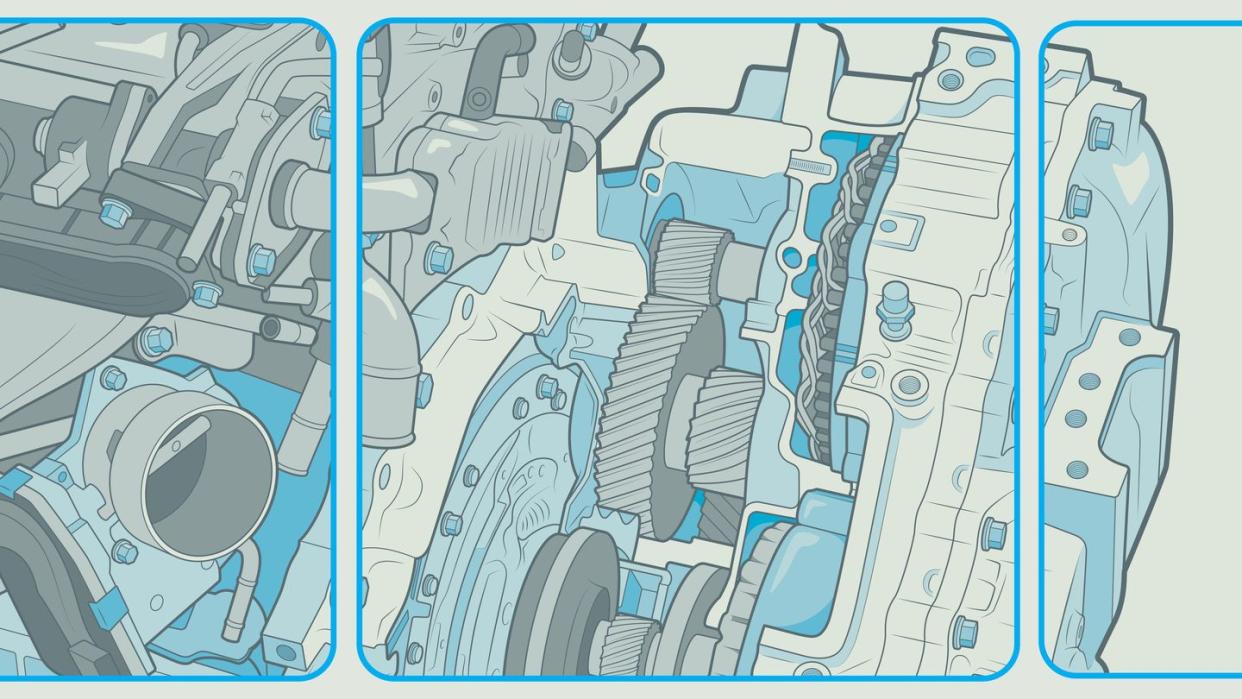
These days, the Toyota Hybrid System doesn't get a lot of love. With our rapid move towards electrification, much more emphasis has been placed on full battery-electric vehicles (BEVs) and to a lesser extent, plug-in hybrid electric vehicles (PHEVs). Hell, in America, you can get a tax credit on a number of BEVs and PHEVs, but not any conventional hybrids. Toyota's hybrid system is old news, though there's a case to be made for its future.
Toyota started working on gas-turbine hybrids back in the Sixties, eventually presenting its work in a special Century prototype in 1975 and a version of the Sports 800 in 1977. The gas-turbine hybrid project continued into the Eighties, with the automaker presenting a Gas Turbine Vehicle (GTV) concept at the 1987 Tokyo Motor Show. But the gas-turbine hybrid was eventually deemed unfeasible, and Toyota discontinued work.

In 1993, Toyota began work on what it called its G21 project, a vehicle for the 21st century. The 1993 Toyko Motor Show, the first held after Japan's asset-price bubble burst, placed a heavy emphasis on economical and clean cars. It was a step away from the heady days of twin-turbo Supras and RX-7s, reduced in scale but not ambition. The G21's team aim was to build an internal-combustion car with double the fuel efficiency of a conventional model, and while the initial plan was to create a pure concept car with a hybrid drivetrain, the company soon decided to move forward with a hybrid production car. The Prius concept of 1995 showed where Toyota was headed, though the car used a very different hybrid system than what ended up in production. It featured a direct-injection four-cylinder paired with a continuously variable transmission (CVT) and a single motor-generator unit. Instead of a battery, the Prius concept utilized a capacitor for energy storage—something Toyota revived for the TS030 and TS040 LMP1 cars of the 2010s.
While the show car was in progress, the G21 team was also hard at work on what would become the production Prius in 1997. The production version of the system ditched the concept's capacitor for a nickel-metal-hydride battery and did away with the conventional transmission entirely. Instead, Toyota devised a novel system with two motor-generator units.
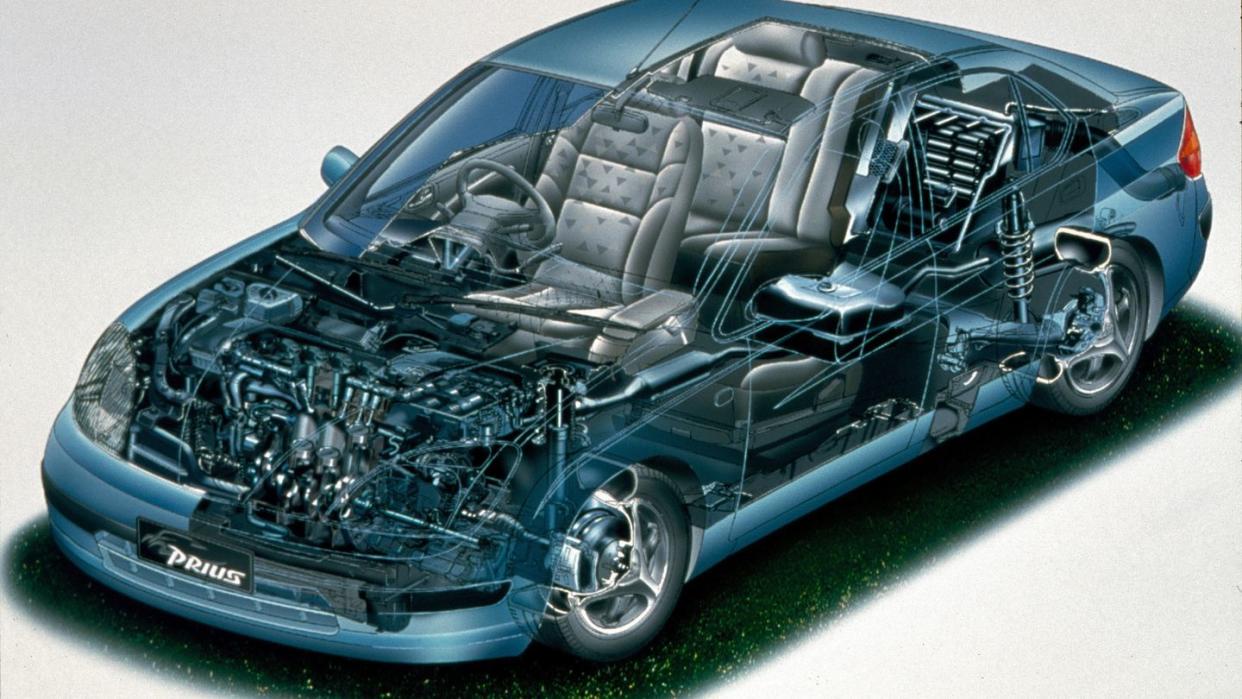
"We studied various systems for about six months from the end of 1994, before deciding that the two-motor type was the best option because of the high fuel efficiency potential," said longtime Prius engineer Satoshi Ogiso in a Toyota-published story celebrating the car's 20th anniversary. "We assumed that power electronics (semiconductors and electronic circuits used to efficiently control power) would make leaps in the near future. There was a lot of promise here. The conventional transmission could be completely eliminated. And yet, the technological hurdles remained high."
Professor John Kelly of Weber State University's automotive program has followed the development of Toyota hybrids since the Prius first came to the U.S. in 2000. He considers the classic Toyota Hybrid System as, essentially, a transmission, and a very basic one at that. In the video below, he provides an overview for the P112 hybrid transaxle used in the second-generation Prius. It's a great explainer of how the basic system works. I watched it a couple times to learn it myself.
It all centers around a planetary gearset, which if you didn't know consists of a ring gear, planet gears, a planet carrier, and a sun gear. Toyota calls this the "power-transfer" device. There are two motor-generator units, which are referred to as MG1 and MG2. Attached to the sun gear is MG1, is the smaller of the two motors. It acts as both a starter for the engine—which we will detail later—and as a generator that charges the battery. MG2 drives the ring gear of the planetary gearset. That ring gear connects directly to the differential via a chain. The planet carrier splines with the constantly engaged clutch of the engine.
What this creates is what Toyota calls a "series-parallel" hybrid. MG2 can drive the wheels with and without the engine, and the engine can also be used to charge the battery by driving MG1. This is what set Toyota apart. As you may recall, Toyota was not the only major manufacturer to bring a hybrid to market at this time. Honda also brought out the Insight in 1999, just barely beating the Prius to showrooms in the U.S. But Honda used a more conventional layout in its hybrid system, sandwiching en electric motor between the engine and transmission. While the Insight was not necessarily more efficient than the Prius, Honda’s hybrid never uncoupled the engine from driving the wheels. The engine was always on. Toyota could run on electricity only, shutting down at stop lights and taking off in silence. It made an impression. It was something new, something different. It was more than a gimmick; it was a revolution.
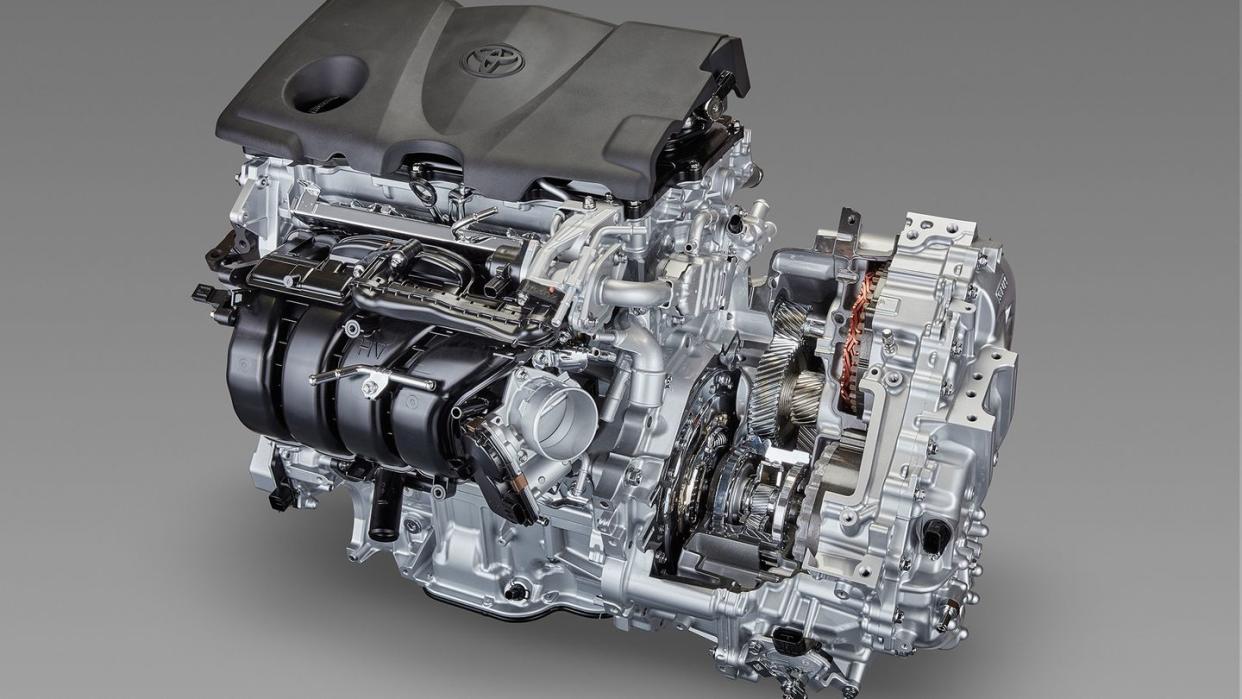
Later versions of Toyota’s system, including those adapted for vehicles beyond the Prius, add components to the mix, in some instances, another planetary gearset. All Toyota Hybrid System cars use a 12-volt battery to operate ECUs, lighting, door locks, and other ancillaries. Toyota's plug-in hybrid models like the Prius and RAV4 Prime use basically the same transaxle setup, just with a larger battery that gives the car an all-electric driving range. In all-wheel drive hybrids, Toyota just adds a separate MGU to power the rear axle.
Most Toyota Hybrid System cars feature an engine that uses the Atkinson Cycle rather than the typical Otto cycle. This essentially holds the intake valves open for slightly longer, which increases efficiency at specific engine speeds, but at the expense of outright power. This isn't ideal for an engine connected to a conventional gearbox that has to operate over a wide powerband, but here, the engine only operates at its ideal speeds.
(Note that the new Sequoia, Tundra, Tacoma, and Land Cruiser use the i-FORCE MAX parallel hybrid system with an MGU sandwiched between the engine and the torque-converter gearbox. There's also the new Hybrid MAX system featured in the Crown and Grand Highlander which uses a six-speed automatic with a wet startup clutch.)
While the basic principles are simple, getting it to work wasn't. "It took us 49 days to get the prototype operating," said Ogiso in the Toyota-published Prius retrospective. "Even then, the driving was awkward and inconsistent. After 500 meters, it just stopped altogether. Yet, it was very emotional for all of us to see it run and know that we had at least got it running before the end of the year."
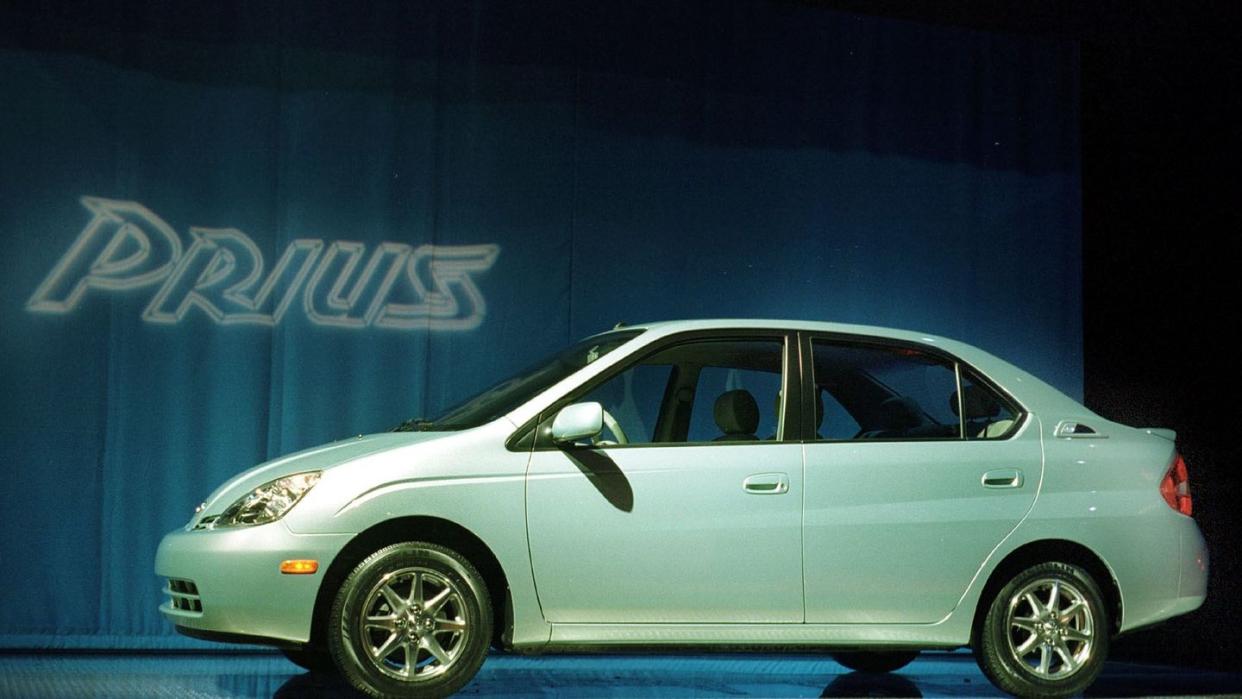
Toyota initially planned to release the Prius in 1998, but pushed forward the reveal to December 1997 to coincide with a U.N. climate summit to be held in Kyoto. Somehow, the G21 team got it done, and the Prius was used to ferry passengers around the summit. Soon after, limited production began for sales in Japan. The team's goal of building a car that was twice as fuel efficient as a gas-powered car was achieved. Soon after launch, the system was further refined for the needs of global markets. Global sales began in 2000 and soon, the Prius became the first successful hybrid car.
In the typical Toyota fashion, the system is very reliable. "As far as the transaxle itself, there's very few things [that break]," Kelly says. "The first generation Prius had some cooling system problems and overheated the electric stator inside that caused the loss of high voltage isolation, but other than that very first generation, all the others have been really good." Some had problems with external coolant pumps, but that's the sort of thing that could've affected any conventional car. And Kelly points out that this hybrid installation is a lot simpler than a conventional automatic transmission, which typically has a planetary gearset per two forward gears and clutch packs that wear out over time. With this system, there aren't any real wear items. Just look at all the high-mile Priuses and other Toyota hybrids ferrying people around the world for years on end.
Ford licensed the system from Toyota for its early hybrids like the Escape, and Kelly points out that even the Maverick uses a similar concept today. The system developed for the Honda Insight, dubbed Integrated Motor Assist, was a parallel hybrid, with motor sandwiched between engine and gearbox. Honda stuck with this for years, though recently introduced its own dual-motor hybrid setup. Subaru also licensed Toyota's system, adapting it for its unique all-wheel drive layout, and Kelly notes that the Chrysler Pacifica hybrid's system is basically a copy of Toyota's.
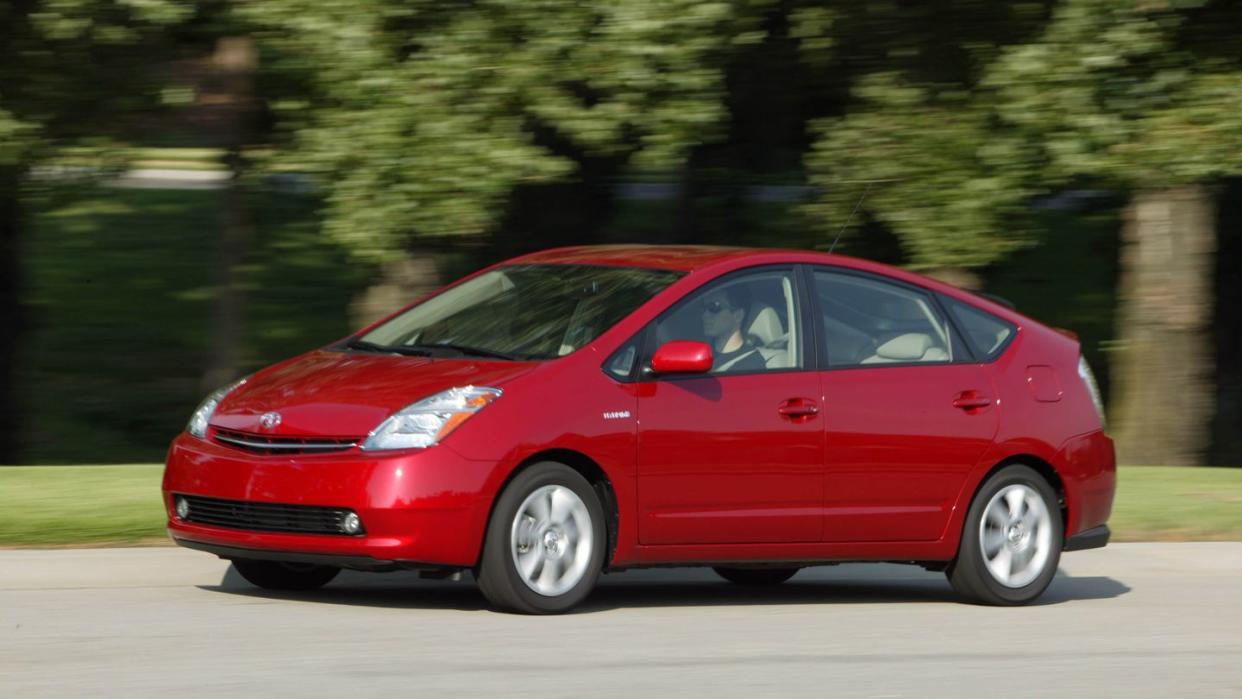
For 2021, the Toyota Sienna went hybrid and in the process, illustrated the effectiveness of this system. For all-wheel drive models, fuel economy jumped from 20 to 35 MPG combined, while C02 emissions decreased from 441 to 253 grams per mile. As my friend and fellow automotive reporter Patrick George points out over at Heatmap, conventional hybrids should be an essential tool in lowering tailpipe emissions, something that needs to be done with some urgency. A hybrid system like Toyota's is very effective at cutting tailpipe emissions without asking for lots of money and big lifestyle changes like a BEV.
Still, Kelly stresses the importance of zero-local-emission BEVs. "I'm in northern Utah near Salt Lake City, and the mountains form kind of a bowl like Los Angeles where emissions get trapped," he says. "So anything with a tailpipe spewing exhaust, especially in January and February, it all gets trapped right here. So running around in the EV, even though you can claim it has a long tailpipe back to a power station, that power station is not in this bowl."
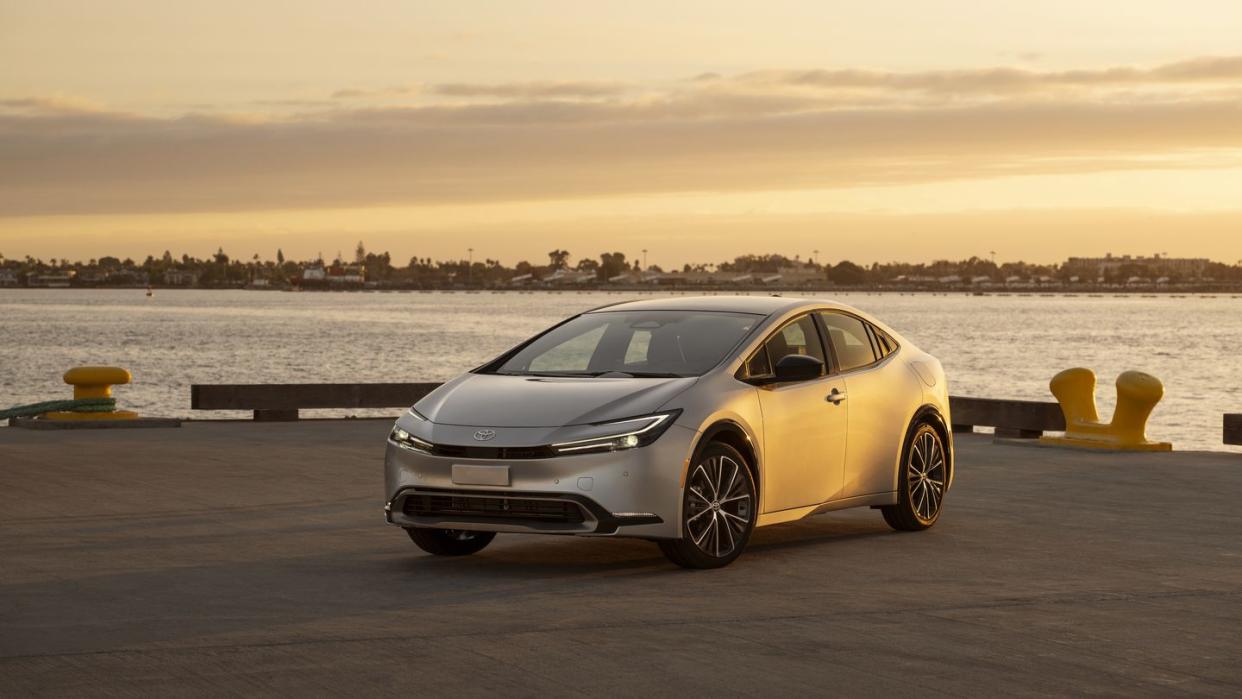
It's a reminder that reducing emissions requires a multi-pronged approach. Yet it's hard to see why a system like this (and the many copycats inspired) shouldn't be an important part of achieving this goal. It's a clever solution that helps tackle a big problem.
You Might Also Like
